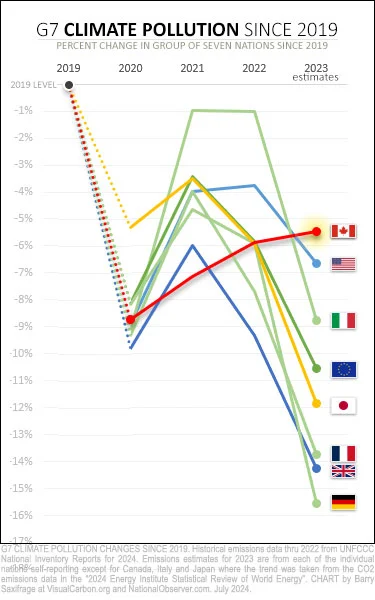this post was submitted on 14 Aug 2024
74 points (100.0% liked)
Canada
7206 readers
334 users here now
What's going on Canada?
Communities
🍁 Meta
🗺️ Provinces / Territories
- Alberta
- British Columbia
- Manitoba
- New Brunswick
- Newfoundland and Labrador
- Northwest Territories
- Nova Scotia
- Nunavut
- Ontario
- Prince Edward Island
- Quebec
- Saskatchewan
- Yukon
🏙️ Cities / Local Communities
- Calgary (AB)
- Edmonton (AB)
- Greater Sudbury (ON)
- Halifax (NS)
- Hamilton (ON)
- Kootenays (BC)
- London (ON)
- Mississauga (ON)
- Montreal (QC)
- Nanaimo (BC)
- Oceanside (BC)
- Ottawa (ON)
- Port Alberni (BC)
- Regina (SK)
- Saskatoon (SK)
- Thunder Bay (ON)
- Toronto (ON)
- Vancouver (BC)
- Vancouver Island (BC)
- Victoria (BC)
- Waterloo (ON)
- Winnipeg (MB)
🏒 Sports
Hockey
- List of All Teams: Post on /c/hockey
- General Community: /c/Hockey
- Calgary Flames
- Edmonton Oilers
- Montréal Canadiens
- Ottawa Senators
- Toronto Maple Leafs
- Vancouver Canucks
- Winnipeg Jets
Football (NFL)
- List of All Teams:
unknown
Football (CFL)
- List of All Teams:
unknown
Baseball
- List of All Teams:
unknown - Toronto Blue Jays
Basketball
- List of All Teams:
unknown - Toronto Raptors
Soccer
- List of All Teams:
unknown - General Community: /c/CanadaSoccer
- Toronto FC
💻 Universities
💵 Finance / Shopping
- Personal Finance Canada
- BAPCSalesCanada
- Canadian Investor
- Buy Canadian
- Quebec Finance
- Churning Canada
🗣️ Politics
- Canada Politics
- General:
- By Province:
🍁 Social and Culture
Rules
Reminder that the rules for lemmy.ca also apply here. See the sidebar on the homepage:
founded 3 years ago
MODERATORS
you are viewing a single comment's thread
view the rest of the comments
view the rest of the comments

 .
.
Sorry to hijack the Canadian topic, but can someone tell me why Germany is always the butt end of nuclear energy fans with numbers like shown here? Either we're the worst of the worst or the numbers here aren't accurate. And I don't think they're so far off. So what's the matter?
Oh and Canada: wrong direction. Line go down please.
Germany seems to be doing 2 things with its energy generation: increasing renewables, and pivoting to coal while it gets off nuclear. The progress in the charts is presumably because its increasing share of renewables is outpacing its pivot to coal. People are still entitled to think the nuclear to renewables via coal transition in 2024 is dumb. Like most important things, there are many different ways to measure things, and the approach matters a lot to what the results look like. These charts aren't intended to compare pollution across countries, but to compare countries' progress on reducing emissions relative to their own 1990s baseline. So, where each country started from matters a lot to the slopes.
Believe me, many Canadians wish we weren't a petrostate, but the oil and gas industry basically control politics and the media. When we had record wildfires last year, I started seeing the word "wildfire" censored in the news in favour of "air quality issues." This year, there is very little wildfire-related news, because it's taboo to corporate interests.